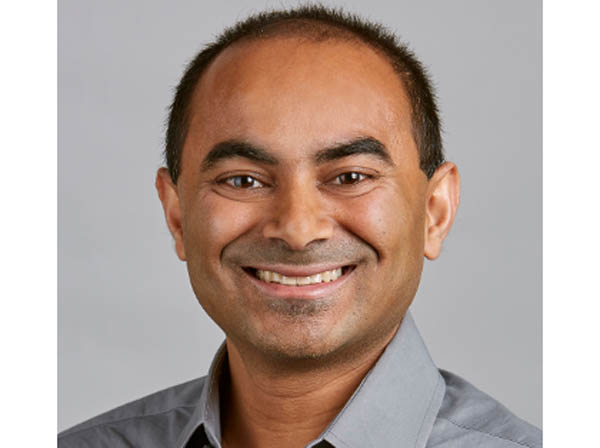
Click to learn more about author Ahmer Inam.
How might artificial intelligence (AI) help physicians diagnose medical conditions more effectively? This question grows more important each year. Approximately 400,000 hospitalized patients experience some type of preventable harm each year, costing the health care industry $20 billion, according to NCBI. Mistakes hurt everyone – first and foremost patients, and also the medical staff who grapple with the emotional and mental toll of committing a misdiagnosis. In addition, diagnosing medical conditions, even when done accurately, can be a time-consuming, laborious task that takes physicians away from treating patients.
AI can help address this problem.
How AI Can Help
AI can help caregivers diagnose problems faster and more accurately. As a result, physicians are more effective, and they can be freed up to treat patients instead of getting mired down in repetitive tasks associated with diagnosing problems. For example:
- A team of researchers from Nanyang Technological University, Singapore (NTU Singapore), Ngee Ann Polytechnic, Singapore (NP), and the National Heart Centre Singapore (NHCS) has created an AI-powered tool that could speed up the diagnosis of cardiovascular diseases. The tool uses electrocardiograms (ECGs) to diagnose coronary artery disease, myocardial infarction, and congestive heart failure to an accuracy of more than 98.5%. The tool was based on a limited sample of data; the team says it’s working with hospitals to conduct more trials to validate the tool’s clinical use with a larger database of patients.
- KT, a telecom company in South Korea, is working with South Korea-based Inha University to research AI-based medical diagnosis assistant algorithms. As one outcome, they seek to develop a way to help doctors diagnose thyroid nodules. These are solid or fluid-filled lumps that form within a patient’s thyroid. Most are noncancerous, but thyroid nodules can become cancerous. It’s less lethal if caught at an early stage, which is where AI can come into play.
Currently, AI is showing great potential improving diagnostic care in two major ways:
- Reducing mistakes and improving care: According to the Institute of Medicine at the National Academies of Science, Engineering and Medicine (NASEM), diagnostic errors contribute to approximately 10% of patient deaths. AI can cut down on mistakes and improve care quality by processing vast amounts of health care data ranging from medical images to doctor reports and detect symptoms that no human being could possibly find. For example, machine vision applications can help pathologists more accurately identify diseases in bodily fluids and tissues. In addition, AI can improve care by diagnosing problems faster than human beings can. Google researchers, for example, recently showed that a well-trained neural network detected lung cancer in medical images faster than trained radiologists. What’s more, recent research shows that AI can detect breast cancer with 95% accuracy.
- Rare diseases: One of the most vexing issues physicians face is treating rare diseases because by their nature they are not encountered as often as other ailments are and therefore can be more difficult to detect. Children born with rare diseases are misdiagnosed 40% of the time. One of the problems with diagnosing rare diseases is that physicians have a more difficult time connecting seemingly disparate symptoms to a rare disease. But health tech nonprofit startup Foundation 29 is developing a tool called Dx29 that uses AI to interpret genetic tests and explore possible pathologies faster than physicians can by sifting through patient data. But the initiative is young and requires more participation from patients willing to share data in order to train the AI to know what to look for.
We have a long way to go, and many obstacles remain. They include:
- Data inaccuracy: AI is only as good as the data it uses. And AI systems need to rely on a vast amount of data, including images, to be trained properly. Data curation requires AI to collect and label text, images, audio, video, speech, and other data to improve machine learning algorithms. And yet, data curation is enormously challenging to manage correctly. The process is fraught with pitfalls. As noted here, the quality of those images can have a vast impact on the efficacy of AI to diagnose a problem accurately.
- Data completeness: As noted in the above example with the tool that may diagnose cardiovascular problems, current research needs to expand its data set to become more effective. This is not always easy to do. Researchers need to connect with other researchers and physicians to collect a larger pool of data. Yes, AI can scan vast amounts of data, but AI needs to be pointed in the right direction to a large-enough data pool.
- Challenges with data inclusivity: AI data curation can become hampered by bias and a lack of inclusivity. Recently Google shared a preview of an AI-powered dermatology assist tool that helps people understand what’s going on with issues related to their skin, hair, and nails. The tool received criticism for failing to adequately account for people of color. Although the dermatology assistant is technology for use to formally diagnose medical issues, the controversy underlines how hard it is to collect data accounts for the diversity of society.
One way to overcome both of these obstacles is to apply a human-centered approach to AI. A human-centered approach means applying an iterative process on a strong technology platform to curate data at scale with a diverse pool of humans in the loop for tasks such as data curation. A human-centered approach also means working with under-represented communities through the diversity needed for data programs (age, gender, groups, genre, geographies, ethnicities, cultures, and languages) to build more inclusive AI-based products and to reduce bias. It’s not up to the medical profession to figure all this out alone. Integrating people, platforms, and technology effectively is crucial.
